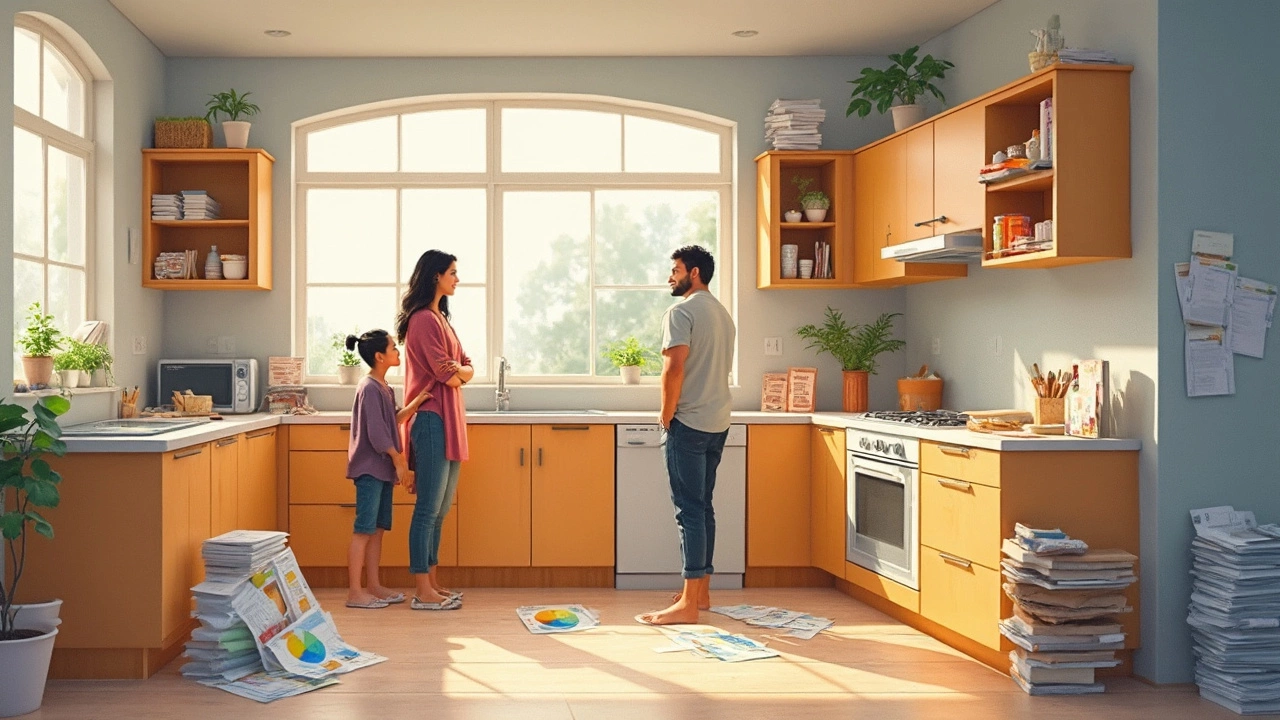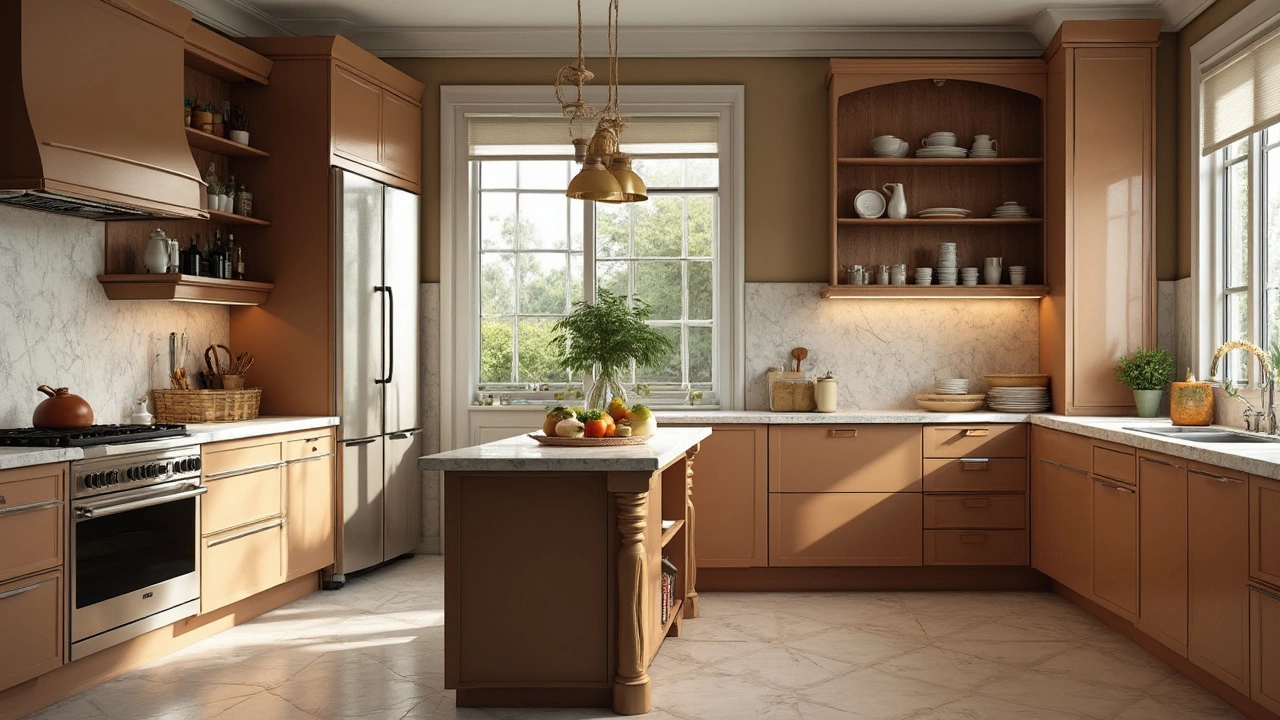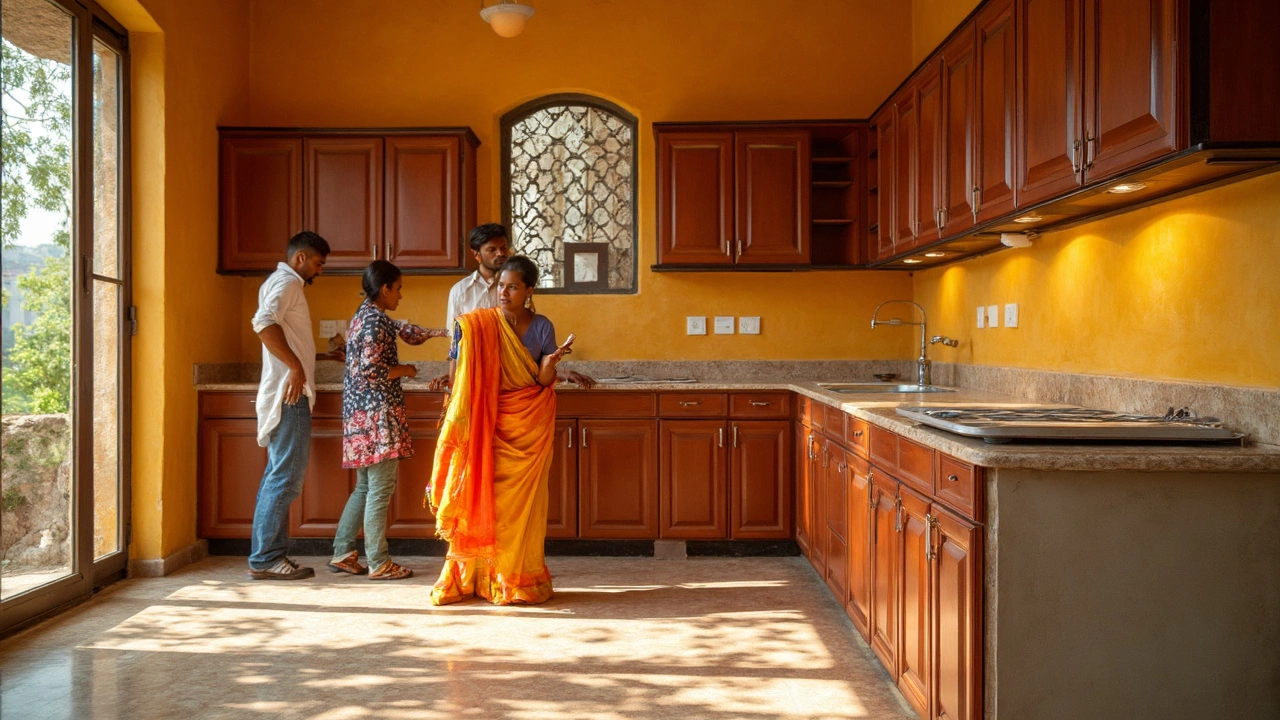Most Expensive Part of Kitchen Remodel: Cabinets, Appliances, and Design Costs Explained

You might dream about a slick new kitchen, but that dream can come with a price tag that makes even the calmest homeowner sweat. Sometimes people assume pricy stone countertops are the real wallet drain, or maybe that giant, gleaming fridge. But the truth is sneaky—what usually costs the most isn’t the flashiest thing. It’s the foundation of almost every remodel, something you touch every day without thinking. Ready for it? The cabinets nearly always swallow the biggest chunk of your budget, and it’s not even close. Those boxes, doors, hinges, and finishings quietly stack up costs like you wouldn’t believe.
Why Cabinets Dominate the Kitchen Budget
Some folks think the appliances or maybe the countertops run up the tab the most, but nearly every experienced remodeler will nod and tell you: it’s always the cabinets. If you’ve walked into a kitchen store, you know even the most basic cabinets can look simple, but they’re never cheap. Let’s talk numbers and see how it happens.
Cabinets typically eat up between 25% and 40% of your whole kitchen remodel budget. So if you’re planning to spend $50,000 on a full-job remodel (which is about average for a mid-range American kitchen as of 2024), you could be dropping $12,500 to $20,000 on just the cupboards. If you want custom, painted solid wood, pocket doors, or soft-close everything, that number only climbs. The cheapest way out—stock cabinets or ready-to-assemble—is possible if your space is a simple rectangle, but if you have odd angles or want something without gaps and weird filler panels, you’ll quickly slide into the world of semi-custom or fully custom cabinetry. The price balloons from there.
The labor for installation is a hefty add-on. Good cabinet installers make it look easy, but fitting each box flush, working around old walls, leveling every door, and tuning those drawers (so nothing sticks or rubs) takes skill and, more importantly, time. You pay for every hour. Plus, every soft-close hinge, lazy Susan, pull-out tray, or spice organizer bumps up the ticket. Each little detail in cabinetry is surprisingly expensive, which is why compromises often start here. Fancy finish? Be ready to splash out.
If you want a closer look at what cabinets can cost, check this rough breakdown:
| Cabinet Type | Typical Cost (10'x10' Kitchen) |
|---|---|
| Stock Cabinets | $2,000 - $5,000 |
| Semi-Custom Cabinets | $7,000 - $15,000 |
| Custom Cabinets | $14,000 - $30,000+ |
So why do cabinets cost so much? Several reasons: there’s the quality of materials, the finish, the hardware, interior extras, and the labor. Even before you shell out for fancy custom paint jobs, custom shelves, or built-in organizers, you’re paying for the fact that cabinets define the entire feel and function of your kitchen. Cheap cabinets can ruin your dream, while good ones last decades—so many folks decide not to cut corners here.
A fun fact: A Harvard Joint Center for Housing Studies report found that Americans spend more on kitchen cabinets than on any single part of their home improvement budget, except maybe whole-house HVAC. Cabinets just eat the pie. And if you decide to reface instead of replace, you save money, but you’re still probably making the cabinets your biggest cost.
The Runner Ups: Appliances and Countertops
If cabinets are king, appliances and countertops are the court. High-end stoves, fridges, and dishwashers can destroy your budget if you fall in love with that all-brass La Cornue or a sub-zero smart fridge. Here’s a concrete look at what those choices do to your wallet:
- A standard fridge can be yours for $1,000. Want built-in style with matching panels and Wi-Fi? Think $8,000 and up.
- Ranges and cooktops start at $600 but can go higher than $15,000 for gourmet or pro-series models.
- Dishwashers, wine coolers, microwave drawers, all bump up the price if you want the latest tech and quiet operation.
On average, kitchen appliances usually take 10% to 15% of a remodel budget. Take a $50,000 kitchen. That’s $5,000 to $7,500 just for gadgets. Go ultra-premium, and that number doubles fast.
Countertops are just as wild. You walk into a showroom, and you’ll see slabs of quartz, granite, or marble that cost $60 to $200 per square foot, in some cases even more if you crave something rare or imported. A medium-sized kitchen might use roughly 40 square feet of countertop. Simple math? Even at $100 per square foot, that’s $4,000 before you add installation, cutouts for sinks, or waterfall edges. Want a statement kitchen island made from semi-precious stone? You’ll be shocked how quickly you soar past $10,000.
Don’t forget fabricated countertops like solid surface (Corian), which can save some cash, but they still cost more than many expect. And laminate, the old standby, is the cheapest—but most new kitchens skip it for resale value and durability. Counters may not win as the most expensive part, but for some people’s taste, they climb right behind cabinets and appliances, especially if you go premium.

Labor, Design Fees, and The Hidden Costs
Cabinets, appliances, counters—those are easy to see on a bill, but the costs that trip people up most are usually hiding in plain sight. Labor is one of those. Hiring licensed plumbers, experienced electricians, and skilled tile installers doesn’t come cheap. Each hour costs, and the best ones aren’t desperate for work, so you’re paying for their know-how and reliability.
The National Kitchen & Bath Association says labor often eats another 17% to 25% of a total kitchen remodel. Let’s stick with a $50,000 job: that’s $8,500 to $12,500 for labor. This covers carpenters, tile setters, drywallers, demolition crew, and the permits you need for structural or electrical work. Maybe only a quarter of the remodel cost, but without labor, the pieces won’t fit or work safely.
Now, design can really catch people off-guard. Walking into a big home store might get you free “design help,” but pros charge. Interior designers or kitchen specialists charge $100 to $250 per hour or may ask for a flat fee—sometimes 5% to 15% of your project’s total. That expert advice can save you from costly blunders or embarrassing layouts but does come at a price.
Don’t forget the hidden costs. You’ll need demolition, perhaps asbestos remediation in old homes, dumping fees, and usually something you didn’t budget for—think water-damaged floors or out-of-code wiring. Set aside at least 10% of your total for these surprises. Nothing makes a remodeler gulp like a phone call that starts with “we found something.”
Let’s put all these numbers in one simple table:
| Remodel Item | Percent of Budget |
|---|---|
| Kitchen Cabinets | 25% - 40% |
| Appliances | 10% - 15% |
| Countertops | 10% - 15% |
| Labor | 17% - 25% |
| Design/Planning | 5% - 10% |
| Other Materials/Hidden | 10%+ |
If you’re eyeing a kitchen gut job, remember—mix and match on price. Saving on one area (like picking a less expensive tile backsplash) might allow you to splurge where it truly matters to you (like dovetailed drawers and custom maple cabinets).
How to Manage Your Budget Without Regret
So, knowing cabinets will eat your lunch, what can you do to manage the pain? Here’s what I see working for smart remodelers right now:
- Get three quotes for every trade. Cabinetmakers, installers, plumbers—don’t settle, compare.
- Push for semi-custom or stock cabinets unless you have an unusual layout. Custom is amazing, but unless you plan to live in your house for 30 years, you may not see a return.
- Prioritize install quality over extra bells and whistles. Well-installed basic cabinets beat fancy features that break in a year.
- If you must have that $5,000 range, save by choosing a mid-tier fridge and spend more on the vent hood instead. Matching every appliance in price is unnecessary.
- Consider open shelving for some wall areas—it’s trendy and can save thousands over more upper cabinets.
- Prevent surprises by hiring a designer for an hour or two to check your plans. Even a short consult spots awkward workflow issues and unnecessary add-ons.
- Keep the plumbing in the same place. Moving sinks, moving gas, and shifting electrical almost always snowball into extra thousands.
- Ask for line-item breakdowns in every estimate. You’ll see if anything’s padded or negotiable.
One trick I love: If you want the look of a luxury kitchen but don’t have the luxury budget, prioritize visible surfaces. Splurge on the cabinet doors and drawer fronts, but stick with less expensive box construction or even refacing, if your originals are solid. No one at the dinner party will know the difference, but your bank balance will.
Remember, kitchens aren’t just about looking great. You’ll stand there making coffee every morning and prepping a thousand little lunches. Cabinets frame the whole story. They’re what you see, use, and move around every day. Cutting them from the budget almost never ends well.
If you want to go the other way and save, buy fewer cabinets and make better use of drawers and deep pullouts. Most people over-order, ending up with awkward cabinets that become junk collectors. Thoughtful design beats more stuff, hands down.
There it is—the true wallet-eater in a kitchen remodel is the cabinetry. But knowing this, you can game the process, focus on what matters to you, and maybe end up with both a kitchen and a bank account you love.
